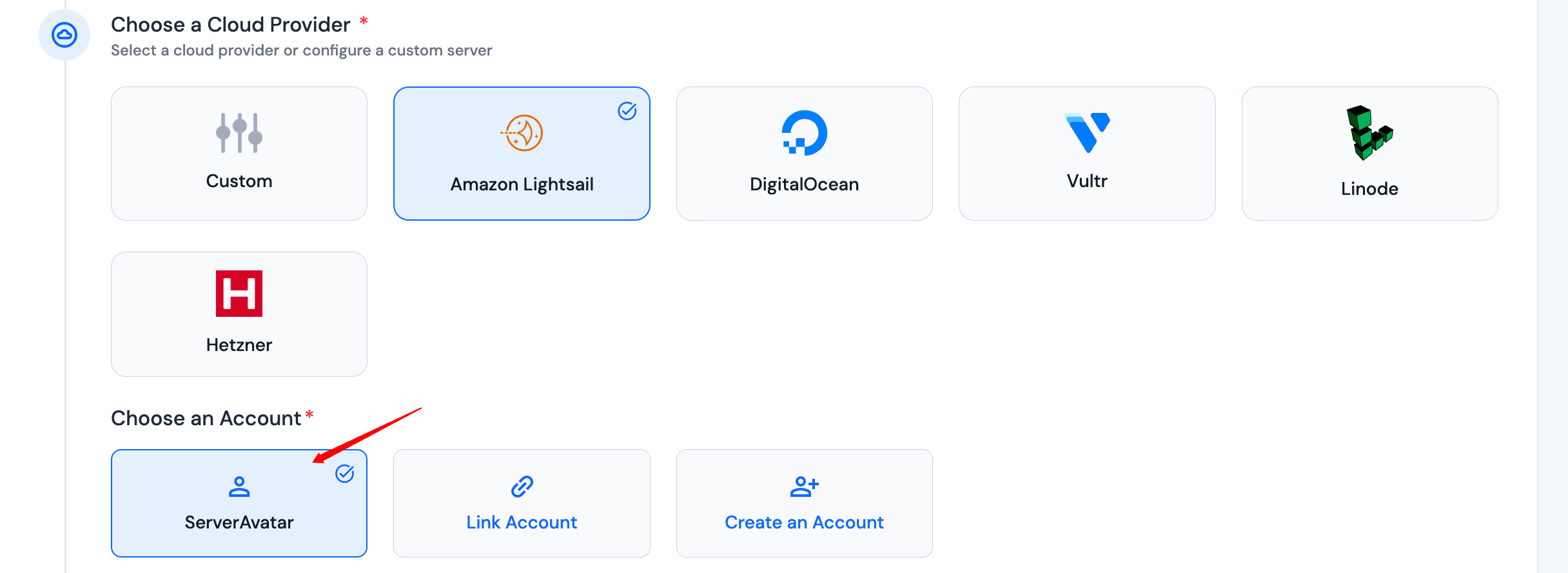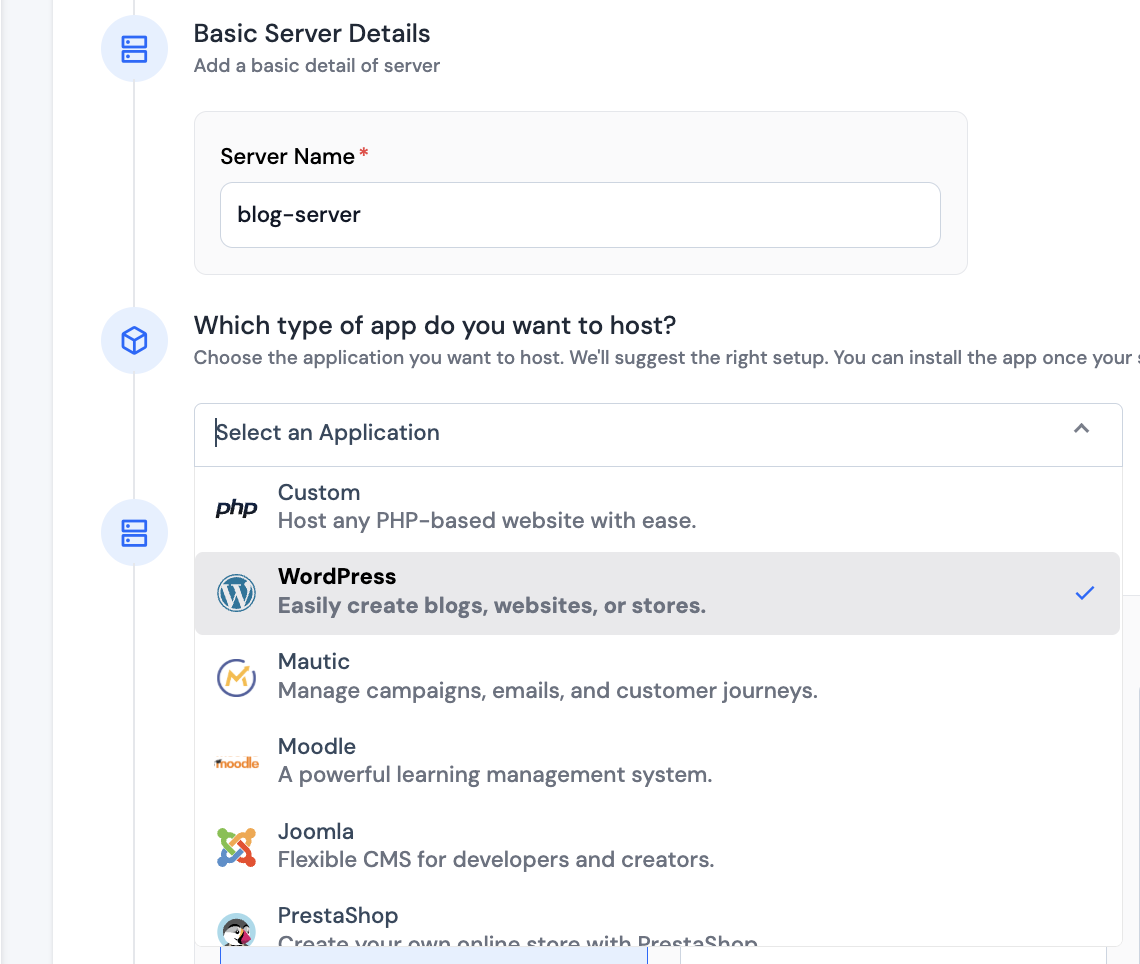Amazon Lightsail
Amazon Lightsail simplifies cloud computing by offering a straightforward platform for launching and managing virtual private servers (VPS). It provides a convenient solution for users who need a simple yet powerful cloud platform for hosting websites, running applications, and managing development projects.
Follow the step-by-step process below to connect Amazon Lightsail with ServerAvatar:
Step 1: Log in to your ServerAvatar account and click the Create → Server button in the top-right corner.

Step 2: Select Self Server as the server type.

ServerAvatar provides the following options to create or link your Amazon Lightsail account:
-
Connect Existing Amazon Lightsail Account: If your Amazon Lightsail account is already linked, it will appear in the list. Simply select your account from the available options, as shown below.
-
Link Amazon Lightsail Account: If you already have an Amazon Lightsail account but haven’t linked it, use the link below to integrate it with ServerAvatar:
-
Create a New Amazon Lightsail Account: If you don’t have an existing Lightsail account, click on the "Create an account" option. You’ll be redirected to the AWS signup page. After creating your account, return to connect it with ServerAvatar.

Step 3: Once you’ve selected your Amazon Lightsail account, enter a Server Name of your choice.
Step 4: Select the Application Framework you intend to host. Based on your selection, ServerAvatar will recommend the appropriate setup.
Note: This field is optional.

Step 5: Choose a Tech Stack, the desired Operating System image, and a Database.
When selecting your tech stack, consider the specific requirements of your project. If you choose the Node Stack, please note that MySQL and MariaDB are not compatible with this stack.

If you need Node.js, enable the corresponding toggle.
If you select the Node Stack, the Node.js toggle will not be visible as it is already included.
You can also enable Yarn installation by toggling the Install Yarn Along with Node option, if you select Node Stack as your web server.

Step 6: Choose an SSH Key:
- Generate a new key: This will create a new private-public key pair for secure access.
- Add a public key: If you already have an SSH key, you can add the public key to the server to use your existing key.

Step 7: Select a Server Location, Size, and Availability Zone.
Choose a server region that best suits your target audience. You’ll also be able to choose a server instance based on CPU cores, memory, storage, bandwidth, and pricing. Finally, select the availability zone for deployment.

Step 8: Click the Deploy Server button to begin the deployment process.

Installation Process
During installation, you will see which services are being installed and configured in real-time. ServerAvatar will perform the following steps:
- Install a web server (Apache, Nginx, or OpenLiteSpeed)
- Install PHP and all supported versions (from 7.2 to 8.3)
- Install and configure PHP-FPM
- Install and configure MySQL
- Install and configure Redis
- Create a SWAP memory file
- Create basic virtual host files
- Install Git and Composer
- Finalize the setup and perform testing
The entire installation typically takes 5 to 15 minutes. Once complete, your server will be fully configured and ready to host PHP/WordPress sites directly from the ServerAvatar panel. This is how you can connect an Amazon Lightsail server with ServerAvatar.